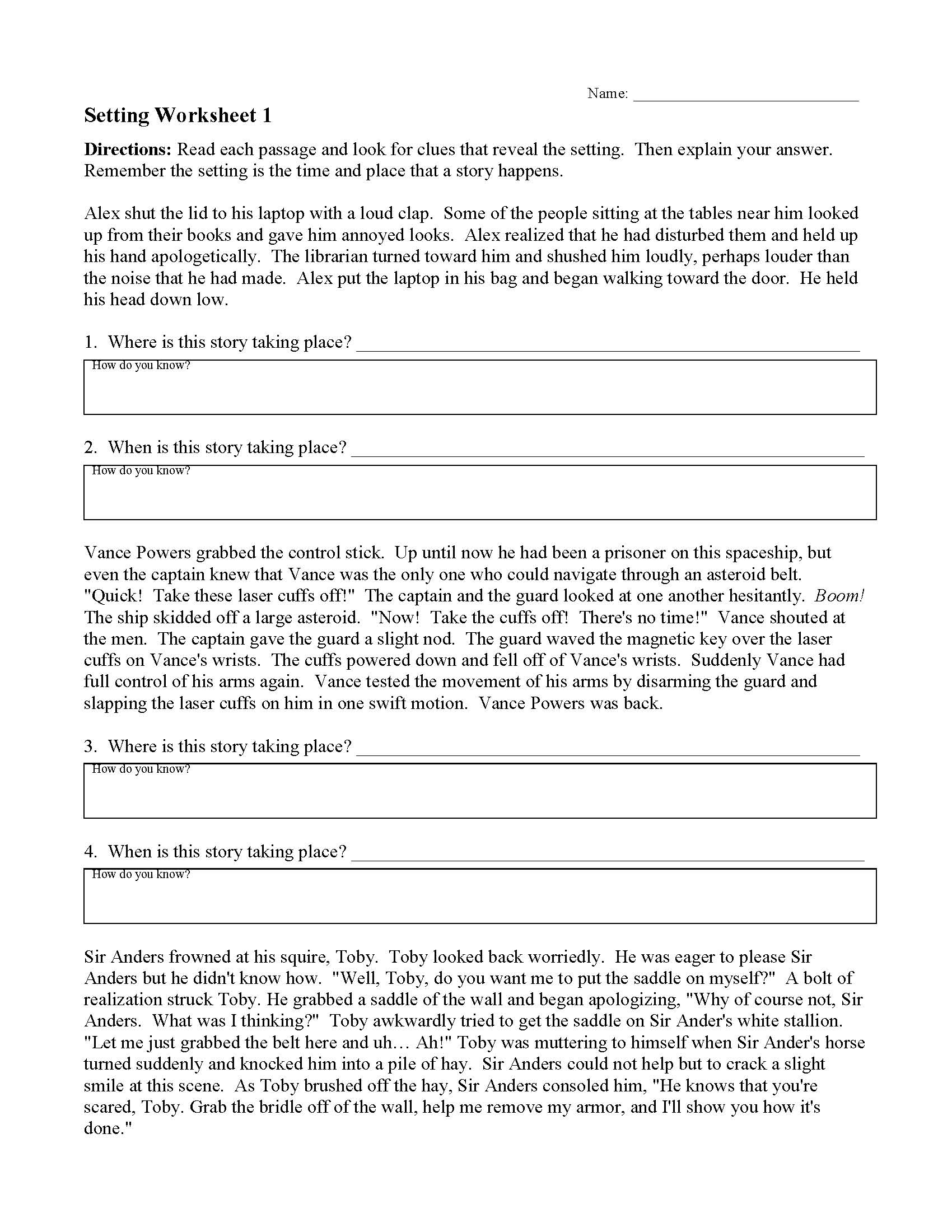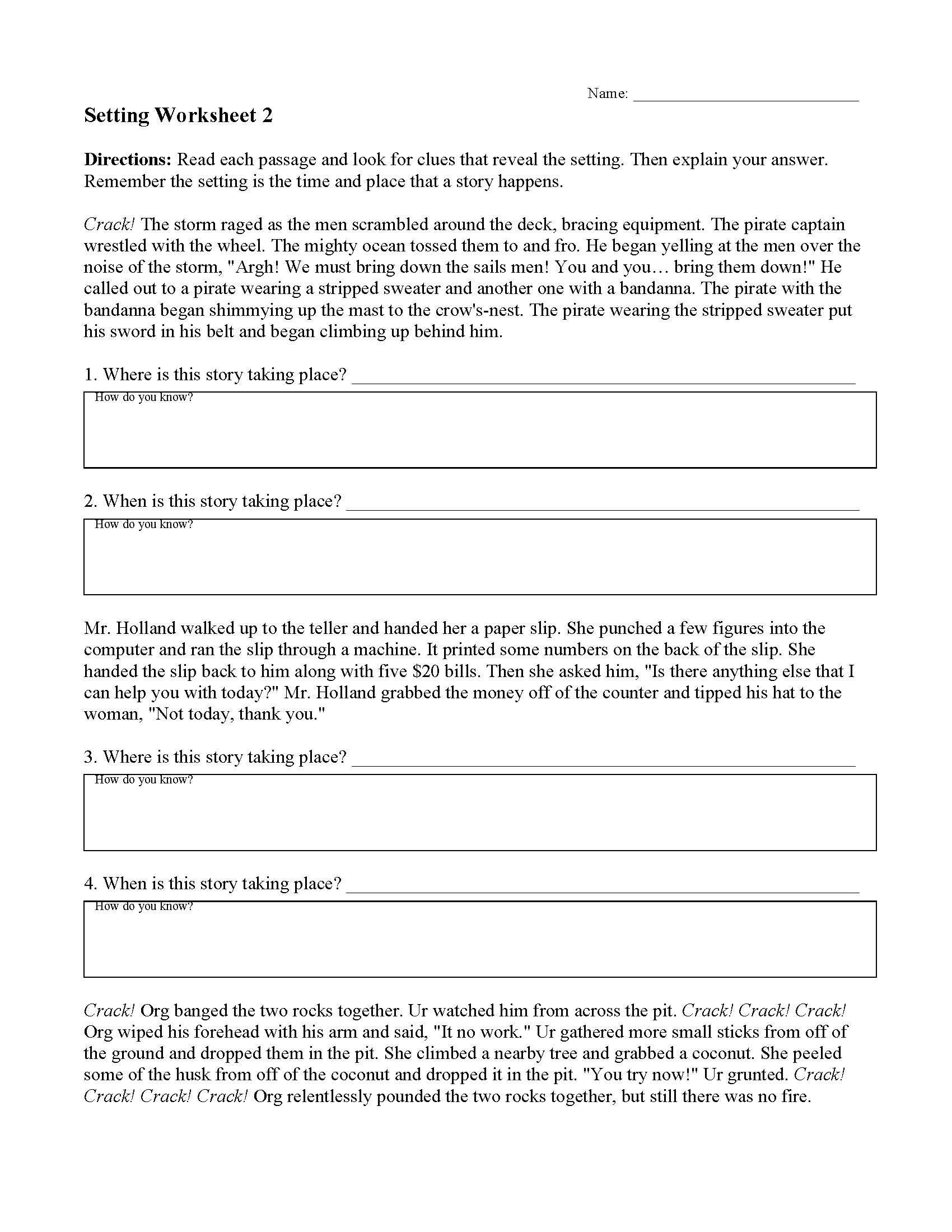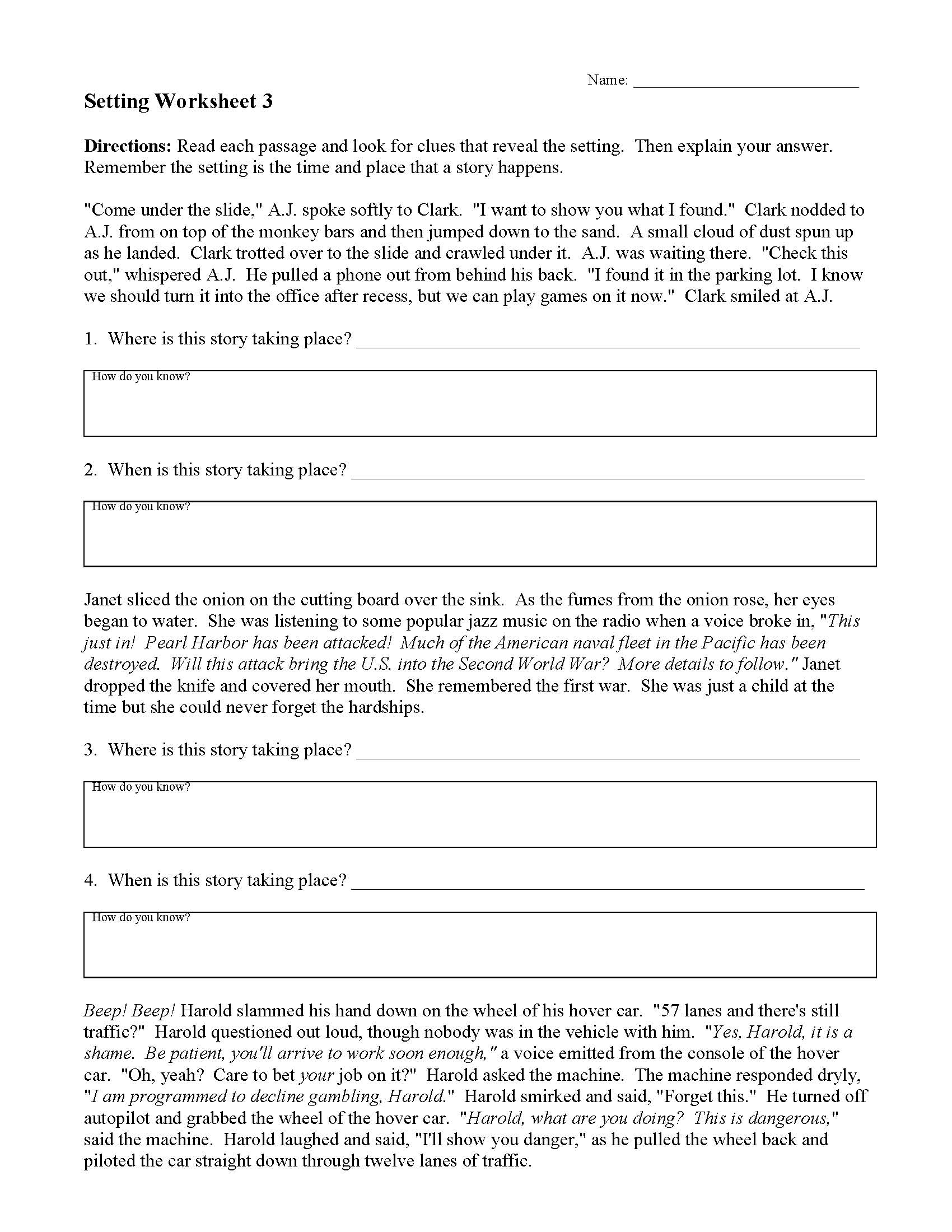Setting Worksheets
The setting of the story is the time and place that it occurs. Every story has a setting. The setting helps to create the mood of the story. It influences how readers feel about the text. Here is an example of what I mean.
Being able to identify when and where the story is taking place is a basic reading comprehension skill. Here are a sampling of worksheets to help students practice identifying settings. In each worksheet students read a variety of short texts and then must infer the setting based on close reading. Then they must explain their answers. These worksheets are great practice for determining the setting of a story. I have also included a PowerPoint lesson on setting. This lesson contains definitions, examples, and useful tips. There is also a practice activity after the lesson. I hope that these resources help students master the skill of interpreting literary settings.




I hope that these setting resources help students master this basic reading skill.
Setting
Common Core State Standards
RL.K.3 - With prompting and support, identify characters, settings, and major events in a story.
RL.1.3 - Describe characters, settings, and major events in a story, using key details.
RL.2.3 - By the end of year, read and comprehend informational texts, including history/social studies, science, and technical texts, in the grades 2–3 text complexity band proficiently, with scaffolding as needed at the high end of the range.
RL.4.3 - Describe in depth a character, setting, or event in a story or drama, drawing on specific details in the text (e.g., a character’s thoughts, words, or actions).
RL.5.3 - Compare and contrast two or more characters, settings, or events in a story or drama, drawing on specific details in the text (e.g., how characters interact).
RL.7.3 - Analyze how particular elements of a story or drama interact (e.g., how setting shapes the characters or plot).
RL.11-12.3 - Analyze the impact of the author’s choices regarding how to develop and relate elements of a story or drama (e.g., where a story is set, how the action is ordered, how the characters are introduced and developed).
Search here.
5 Comments
Leave a Reply
- Author's Purpose Worksheets
- Characterization Worksheets
- Conflict Worksheets
- Fact and Opinion Worksheets
- Figurative Language Activities
- Figurative Language Poems with Questions
- Genre Activities
- Irony Worksheets
- Making Predictions
- Mood Worksheets
- Nonfiction Passages and Functional Texts
- Parts of Speech Worksheets
- Poetic Devices
- Point of View Worksheets
- School Project Ideas
- Setting Worksheets
- Simile and Metaphor Worksheets
- Story Structure Worksheets
- Text Structure Worksheets
- Theme Worksheets
- Tone Worksheets
- ALL PAGES AND WORKSHEETS







Joy
/ October 17, 2023These options are a great supplement, quick check and assessment for us. Thank you.
Maria
/ June 22, 2022I am so grateful for all the worksheets and explanations in this website.
Thank you for all your hardwork.
Much appreciated!
latifa
/ May 25, 2022so helpful and creative
Ashwath
/ April 15, 2021I like it all 3 setting worksheet
Karmen Lady
/ March 7, 2019I was wondering if this site offered more hands-on experience. My kids like doing hands on and from what I can see this site does not really offer hands-on. I think there would be a better outcome if the kids could interact a bit more with the teacher and other students. For 3-4th grades the students like activities but I have found this site has rather boring activities for the children.